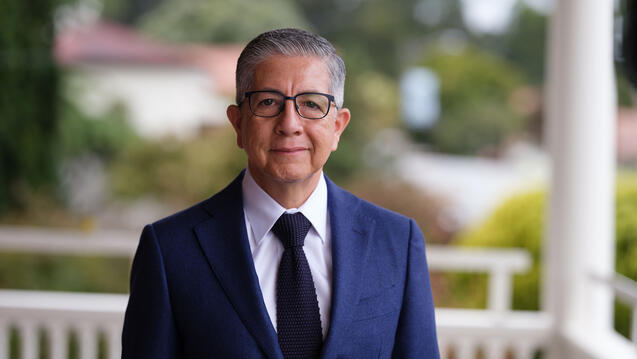Women Invade USF!
The headline in the San Francisco Foghorn read, “Feelings run high — Coeds invade USF.”
According to the story that followed, the announcement that USF was going fully coeducational in the fall of 1964 was greeted with “boos, cat-calls, and a few isolated cheers.”
While women had been enrolled in nursing, law, and the College of Arts and Sciences’ evening programs for decades, for the college’s day programs — the university’s largest — coeducation was a new frontier.
There was excitement, anticipation, and, understandably, some fear. After all, it had been primarily an all-boys college for 109 years.
Damned average raisers
“There is a masculine quality in USF, which students desire as an important phase of their collegiate careers,” then-junior Joe Salgado ’66 was quoted in the Foghorn. “With this gone, gone also will be the industrious, serious attitude that characterizes the university.”
USF’s decision to open its doors to women did indeed transform the university, but not in the ways Salgado feared.
That fall, 232 women enrolled as freshmen in the College of Arts and Sciences. They made up 16 percent of the college’s Class of ’68, its first coeducational class. The women were top students in their high schools and had been handpicked by USF recruiters.
When they arrived on the Hilltop, they quickly claimed their places at the top of their classes, hiking up GPAs and skewing professors’ bell curve grading to the boys’ detriment.
“The fellas called the women the DAR — Damned Average Raisers,” then-university president Charles Dullea, S.J., said.
A season of firsts
It was a season of firsts for USF students and a time of excitement and growing pains for the university. Many of the students had graduated from single-sex Catholic high schools.
“For most of my classmates, it was jarring,” remembered Joanne Prigmore Keratzides ’68, an accounting major. “It was a big deal that they were in class with boys for the first time.”
It was also an adjustment for the professors. Keratzides remembers taking a calculus class that had only three female students, and while the professor would only call on the women if they had their hands up, he didn’t hesitate to call on the boys hiding in the back row.
“It was great for me, but sometimes he’d embarrass them, thinking they could ‘take it’,” she laughed.
“I think the university saw having women as more of a responsibility,” said politics major Janet Holland ’68, who remembers a strict dress code of dresses, skirts, and nylons and an 11 p.m. curfew.
Overtaking the men
While the College of Arts and Sciences was a men’s college just opening its doors to women in 1964, by 1980 women had overtaken men in enrollment. Today, the college has a solidly female majority; 63 percent are women.
A half-century of female alumni have left their mark on the university and beyond. They are restaurateurs, artists, and activists. Among them are Heather Fong ’79, the first female police chief in San Francisco, tech entrepreneur Teresa Win ’85, and many leaders in business, education, the arts, and the nonprofit sector.
“There’s no doubt that the decision to fully integrate USF and allow women into any and all programs had a tremendous effect,” said University Historian Alan Ziajka. “They’ve added so much academically, and it’s hard to imagine we would’ve survived as an institution without them.”
Know someone with a powerful USF story? Let us know! usfnews@usfca.edu | Twitter @usfca


